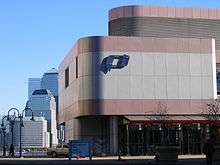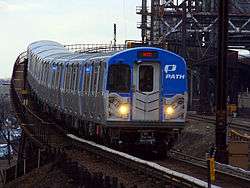Exchange Place station (PATH)
Exchange Place | ||||||||||||||||||||||||||||||||||||||||||||||||||||||||||||||||||||||||||||||||||||||||||||||||||||||||||||||||||||||||||||||||||||||||||||||||||||||||||||||||||||||||||||||||||||||||||||||||
|---|---|---|---|---|---|---|---|---|---|---|---|---|---|---|---|---|---|---|---|---|---|---|---|---|---|---|---|---|---|---|---|---|---|---|---|---|---|---|---|---|---|---|---|---|---|---|---|---|---|---|---|---|---|---|---|---|---|---|---|---|---|---|---|---|---|---|---|---|---|---|---|---|---|---|---|---|---|---|---|---|---|---|---|---|---|---|---|---|---|---|---|---|---|---|---|---|---|---|---|---|---|---|---|---|---|---|---|---|---|---|---|---|---|---|---|---|---|---|---|---|---|---|---|---|---|---|---|---|---|---|---|---|---|---|---|---|---|---|---|---|---|---|---|---|---|---|---|---|---|---|---|---|---|---|---|---|---|---|---|---|---|---|---|---|---|---|---|---|---|---|---|---|---|---|---|---|---|---|---|---|---|---|---|---|---|---|---|---|---|---|---|---|
|
| ||||||||||||||||||||||||||||||||||||||||||||||||||||||||||||||||||||||||||||||||||||||||||||||||||||||||||||||||||||||||||||||||||||||||||||||||||||||||||||||||||||||||||||||||||||||||||||||||
|
View of the station platform | ||||||||||||||||||||||||||||||||||||||||||||||||||||||||||||||||||||||||||||||||||||||||||||||||||||||||||||||||||||||||||||||||||||||||||||||||||||||||||||||||||||||||||||||||||||||||||||||||
| Location |
Exchange Place Jersey City, New Jersey | |||||||||||||||||||||||||||||||||||||||||||||||||||||||||||||||||||||||||||||||||||||||||||||||||||||||||||||||||||||||||||||||||||||||||||||||||||||||||||||||||||||||||||||||||||||||||||||||
| Coordinates | 40°42′58″N 74°01′59″W / 40.7162°N 74.032981°WCoordinates: 40°42′58″N 74°01′59″W / 40.7162°N 74.032981°W | |||||||||||||||||||||||||||||||||||||||||||||||||||||||||||||||||||||||||||||||||||||||||||||||||||||||||||||||||||||||||||||||||||||||||||||||||||||||||||||||||||||||||||||||||||||||||||||||
| Owned by | Port Authority of New York and New Jersey | |||||||||||||||||||||||||||||||||||||||||||||||||||||||||||||||||||||||||||||||||||||||||||||||||||||||||||||||||||||||||||||||||||||||||||||||||||||||||||||||||||||||||||||||||||||||||||||||
| Line(s) | Downtown Hudson Tubes | |||||||||||||||||||||||||||||||||||||||||||||||||||||||||||||||||||||||||||||||||||||||||||||||||||||||||||||||||||||||||||||||||||||||||||||||||||||||||||||||||||||||||||||||||||||||||||||||
| Platforms |
2 inter-connected side platforms cross-platform interchange | |||||||||||||||||||||||||||||||||||||||||||||||||||||||||||||||||||||||||||||||||||||||||||||||||||||||||||||||||||||||||||||||||||||||||||||||||||||||||||||||||||||||||||||||||||||||||||||||
| Tracks | 2 | |||||||||||||||||||||||||||||||||||||||||||||||||||||||||||||||||||||||||||||||||||||||||||||||||||||||||||||||||||||||||||||||||||||||||||||||||||||||||||||||||||||||||||||||||||||||||||||||
| Connections |
HBLR @ Exchange Place | |||||||||||||||||||||||||||||||||||||||||||||||||||||||||||||||||||||||||||||||||||||||||||||||||||||||||||||||||||||||||||||||||||||||||||||||||||||||||||||||||||||||||||||||||||||||||||||||
| Construction | ||||||||||||||||||||||||||||||||||||||||||||||||||||||||||||||||||||||||||||||||||||||||||||||||||||||||||||||||||||||||||||||||||||||||||||||||||||||||||||||||||||||||||||||||||||||||||||||||
| Parking | 480-car parking garage | |||||||||||||||||||||||||||||||||||||||||||||||||||||||||||||||||||||||||||||||||||||||||||||||||||||||||||||||||||||||||||||||||||||||||||||||||||||||||||||||||||||||||||||||||||||||||||||||
| Disabled access | Yes | |||||||||||||||||||||||||||||||||||||||||||||||||||||||||||||||||||||||||||||||||||||||||||||||||||||||||||||||||||||||||||||||||||||||||||||||||||||||||||||||||||||||||||||||||||||||||||||||
| History | ||||||||||||||||||||||||||||||||||||||||||||||||||||||||||||||||||||||||||||||||||||||||||||||||||||||||||||||||||||||||||||||||||||||||||||||||||||||||||||||||||||||||||||||||||||||||||||||||
| Opened | 1909 | |||||||||||||||||||||||||||||||||||||||||||||||||||||||||||||||||||||||||||||||||||||||||||||||||||||||||||||||||||||||||||||||||||||||||||||||||||||||||||||||||||||||||||||||||||||||||||||||
| Rebuilt | 1989[1] | |||||||||||||||||||||||||||||||||||||||||||||||||||||||||||||||||||||||||||||||||||||||||||||||||||||||||||||||||||||||||||||||||||||||||||||||||||||||||||||||||||||||||||||||||||||||||||||||
| Electrified | 600V (DC) Third Rail(PATH) | |||||||||||||||||||||||||||||||||||||||||||||||||||||||||||||||||||||||||||||||||||||||||||||||||||||||||||||||||||||||||||||||||||||||||||||||||||||||||||||||||||||||||||||||||||||||||||||||
| Traffic | ||||||||||||||||||||||||||||||||||||||||||||||||||||||||||||||||||||||||||||||||||||||||||||||||||||||||||||||||||||||||||||||||||||||||||||||||||||||||||||||||||||||||||||||||||||||||||||||||
| Passengers (2017) |
4,940,282[2] | |||||||||||||||||||||||||||||||||||||||||||||||||||||||||||||||||||||||||||||||||||||||||||||||||||||||||||||||||||||||||||||||||||||||||||||||||||||||||||||||||||||||||||||||||||||||||||||||
| Services | ||||||||||||||||||||||||||||||||||||||||||||||||||||||||||||||||||||||||||||||||||||||||||||||||||||||||||||||||||||||||||||||||||||||||||||||||||||||||||||||||||||||||||||||||||||||||||||||||
| ||||||||||||||||||||||||||||||||||||||||||||||||||||||||||||||||||||||||||||||||||||||||||||||||||||||||||||||||||||||||||||||||||||||||||||||||||||||||||||||||||||||||||||||||||||||||||||||||
| ||||||||||||||||||||||||||||||||||||||||||||||||||||||||||||||||||||||||||||||||||||||||||||||||||||||||||||||||||||||||||||||||||||||||||||||||||||||||||||||||||||||||||||||||||||||||||||||||
| ||||||||||||||||||||||||||||||||||||||||||||||||||||||||||||||||||||||||||||||||||||||||||||||||||||||||||||||||||||||||||||||||||||||||||||||||||||||||||||||||||||||||||||||||||||||||||||||||
Exchange Place is a station on the PATH system. Located at Exchange Place near the Hudson River waterfront in the Paulus Hook neighborhood of Jersey City, New Jersey, it is served by the Newark–World Trade Center line at all times and by the Hoboken–World Trade Center line on weekdays. The Hudson-Bergen Light Rail has a stop outside the PATH station, which is also called Exchange Place.
History
Original station
The original Exchange Place station opened on July 19, 1909 at the western end of the Downtown Hudson Tubes adjacent to Pennsylvania Railroad station and ferry terminal. The above ground entrance and platforms were refurbished in the late 1960s / early 1970s after the Port Authority of New York and New Jersey took over operations of the Hudson and Manhattan Railroad.
A derailment on April 26, 1942 at this station resulted in five deaths and over 200 injuries. In that incident, the train operator Louis Vierbucken was charged with manslaughter, as he was under the influence of liquor. Court records recount that he "began to go faster and faster, disregarding warning signals and curves" and then the train derailed at the station.[5]
Present day
The present-day station entrance pavilion at Exchange Place was constructed at a cost of $66 million,[6] and was dedicated on September 13, 1989. At this time, the surrounding Paulus Hook area was beginning to undergo revitalization with new office building construction.

The Exchange Place station was closed as a result of the September 11, 2001 attacks, due to water damage. Before the attacks, the station served 16,000 passengers daily.[7] The World Trade Center station was also crucial, as that station contained a loop that enabled trains to turn around and reverse direction. New trackwork was installed at a cost of $160 million,[7] which included an interlocking to allow the trains to switch tracks, thus enabling trains to terminate at Exchange Place.[8] On June 29, 2003, the Exchange Place PATH station reopened, restoring services to Newark, Hoboken, and 33rd Street. On November 23, 2003, service was restored to the World Trade Center site, with the reopening of the World Trade Center station.[9]
In February 2006, the Transportation Security Administration (TSA) established a pilot project to test airport-style security screening at the Exchange Place station.[10]
In 2012 the station was inundated by 13 million gallons of saltwater from the Hudson River, which overflowed as a result of Hurricane Sandy. The PANYNJ, in a resiliency project, plans to replace the glass revolving doors and windows that surround the turnstiles with a seven-foot-high concrete wall and aquarium glass several inches thick. The project will include in the installation of two Kevlar curtains.[11]
Station layout
| G | Street Level | Exits/Entrances |
| M | Mezzanine | One-way faregates, ticket machines, to Exits/Entrances |
| P Platform level |
Westbound | ← NWK–WTC toward Newark (Grove Street) ← HOB–WTC toward Hoboken (Newport) |
| Side platform, doors will open on the left | ||
| Connecting walkway | Cross-platform interchange between platforms | |
| Side platform, doors will open on the left | ||
| Eastbound | → NWK–WTC toward World Trade Center (Terminus) → → HOB–WTC toward World Trade Center (Terminus) → | |
The station entrance is located approximately 100 feet (30 m) west of the former, original station entrance. The station features three 150-foot (46 m)-long escalators that provide access to the platform level, located 75 feet (23 m) beneath street level.[6] In 1991, an elevator was installed to make the station accessible for the disabled, in accordance to the Americans with Disabilities Act.[12] The Hudson-Bergen Light Rail began service in April 2000, initially providing connections to Bayonne.
The station has two vestibules, each containing one side platform and one track for trains in a given direction.[8] The platforms are connected through several corridors. There are switches within the platform at the far western end of the station, where the HOB-WTC line's tracks diverge. As a result, only NWK-WTC trains can serve the whole platform.
Nearby attractions
References
| Wikimedia Commons has media related to Exchange Place (PATH station). |
|
| |
|
| |
|
| |
|
| |
|
|
- ↑ "Images of Rail: Railroads of Hoboken and Jersey City," by Kenneth French; Page 93
- ↑ "PATH Ridership Report" (PDF). pathnynj.gov. Port Authority of New York and New Jersey. December 31, 2017. Retrieved January 28, 2018.
- ↑ "Schedules". Port Authority of New York and New Jersey. Retrieved 31 July 2018.
- ↑ "Stay on Track - PATH Weekend Closures - 2018" (PDF). Port Authority of New York and New Jersey. Retrieved 31 July 2018.
- ↑ "Motorman on Trial in Fatal Tube Crash". New York Times. December 15, 1942. Retrieved September 4, 2009.
- 1 2 Port Authority of New York and New Jersey (September 8, 1989). "NEWS ADVISORY". PR Newswire.
- 1 2 Weiser, Benjamin (June 29, 2003). "Closed Since 9/11, a PATH Station Is Set to Reopen Today". New York Times. Retrieved September 4, 2009.
- 1 2 Dougherty, Peter (2006) [2002]. Tracks of the New York City Subway 2006 (3rd ed.). Dougherty. OCLC 49777633 – via Google Books.
- ↑ "PATH Service Restoration FAQ".
- ↑ Garcia, Michelle (February 8, 2006). "Rail Passengers Screened In Test of Tighter Security". Washington Post. Retrieved September 4, 2009.
- ↑ https://www.nytimes.com/2017/10/29/nyregion/five-years-after-sandy-are-we-better-prepared.html
- ↑ Ross, Bruce (May 1991). "Access for the disabled; Port Authority of New York and New Jersey policy for disabled passengers". Mass Transit. p. Vol. 18 ; No. 4–5 ; Pg. 40.
